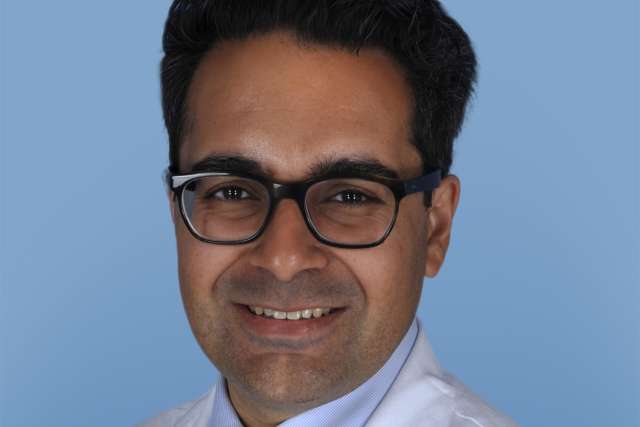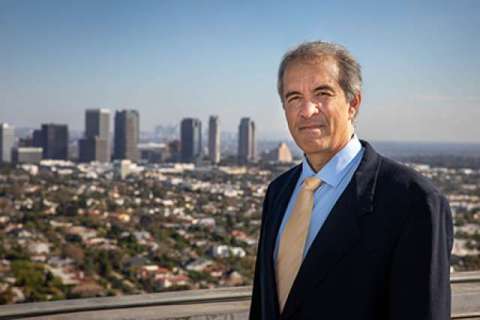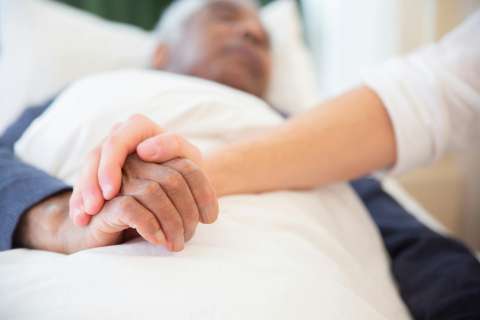From early in his career, UCLA Health plastic surgeon Andrew Vardanian, MD, has gravitated to treating the complex needs of burn patients.
In severe cases, they may require resuscitation and other lifesaving medical care, followed by as many as 30 surgeries or more.
“My interest comes from my compassion for these patients and seeing these horrible injuries and trying to get them to a place where they have improved form and function to live a more normal life,” Dr. Vardanian said.
In February, Dr. Vardanian achieved a long-time goal. He became medical director of the UCLA Health Regional Burn Center at UCLA Health West Valley Medical Center in West Hills.

The burn center is a first for UCLA Health, which in spring 2024 acquired the former West Hills Hospital and Grossman Burn Center. The San Fernando Valley burn center is one of only three in Los Angeles County.
“We want to provide compassionate and exemplary care in being a world-class burn unit,” Dr. Vardanian said.
Extensive training
Dr. Vardanian, an associate clinical professor of plastic surgery at the David Geffen School of Medicine at UCLA, first cared for burn patients at a county burn unit during his residency at UCLA Health.
“That was my first work with burn patients and I was fascinated by the science of burn care and the elements of medical care as well as surgical care,” he said. “It’s something that I’ve always felt compelled to be a part of.”
He went on to complete a combined burn and critical care fellowship at Massachusetts General Hospital and Shriners Hospitals for Children. He’s among a handful of physicians that hold board certification in critical care, general surgery and plastic surgery, giving him a unique insight into all that goes into treating severe burns.
“It definitely helps me to be able to provide information about the entire spectrum of care for the patients – the critical care elements and the surgical and reconstructive,” Dr. Vardanian said.
Specialized services
The UCLA Health Regional Burn Center has eight intensive care unit beds and 24 inpatient beds. The center treats adults and children, and within the next five years Dr. Vardanian expects to open a dedicated pediatric intensive care unit.
Services include physical therapy, support groups and Child Life Specialists who help to emotionally support children.
The center also houses two hyperbaric oxygen chambers where hospitalized patients can undergo daily treatment to increase the supply of oxygen to their wounds. Dr. Vardanian said the process expedites healing and reduces the conversion of burns to a higher severity.
“This is very unique for our burn unit,” he said.
The center also treats patients who have not suffered burns but have exfoliating skin disorders that require specialty dressings for their wounds.
In addition to patient care, UCLA Health will focus on research into acute burn care, including new technologies and treatments.
“It’s a field that’s constantly being pushed to the next level,” he said.
Developing new technology is important for the military as well as for responding to disasters such as the Eaton and Palisades fires. Dr. Vardanian said the burn center treated several people who were injured in the Eaton fire.
Phases of treatment
Dr. Vardanian said patients come from all over the Los Angeles area. Stays can range from days to months.
Treatment moves in stages. Initially, a patient with severe burns undergoes surgery to remove, or debride, dead and damaged tissue.
The area must heal before permanent skin grafting for deep second- and third-degree burns. The area is then covered temporarily with artificial skin or skin from a deceased donor or animal.
“Burn wounds evolve and change,” Dr. Vardanian said. “One doesn’t want to remove the tissue and just put the skin on when there might be more evolution of the burn injury.”
When patients undergo grafting using their own skin, that adds to recovery for the donor site. In the final stages of recovery, reconstructive surgery can improve the skin’s appearance, mobility and comfort.
“It’s a long journey for a lot of patients,” he said.
Common causes of burn injury
Burns caused by accidents and injuries can affect anyone from babies to older adults, so community burn education and prevention is part of the center’s mission, Dr. Vardanian said.
Scalding injuries are among the most common types of burns. He said they can occur if someone spills a kettle of boiling water or a child knocks over a cup of coffee.
In the warmer months, outdoor injuries can pick up.
“There’s seasonal things that happen with the Fourth of July, with fireworks,” he said. “There’s explosions and hand injuries.”
Beach bonfires can cause burns if smoldering charcoal is buried in the sand rather than extinguished with water.
Other sources of burn injuries include car accidents, chemical or electrical burns sustained in the workplace, and inhalation and flame burns in house fires.
Even before having the burn center, UCLA Health worked to improve burn care.
Dr. Vardanian, who is of Armenian descent, said many Armenian children were severely burned after a 2023 fuel depot explosion in a disputed region of Azerbaijan.
UCLA Health provided ICU doctors via telemedicine, while UCLA Health pediatric surgeon Shant Shekherdimian, MD, arranged for some of the children to receive burn treatment at no cost at Shriners in Boston.
“There’s so much global need for burn care,” Dr. Vardanian said.
Dr. Vardanian praised the burn center staff, which is working toward accreditation by the American Burn Association.
“Everyone is highly motivated and really excited about the UCLA Health Regional Burn Center,” he said. “I think we have a lot of great things in store for us in the future.”





